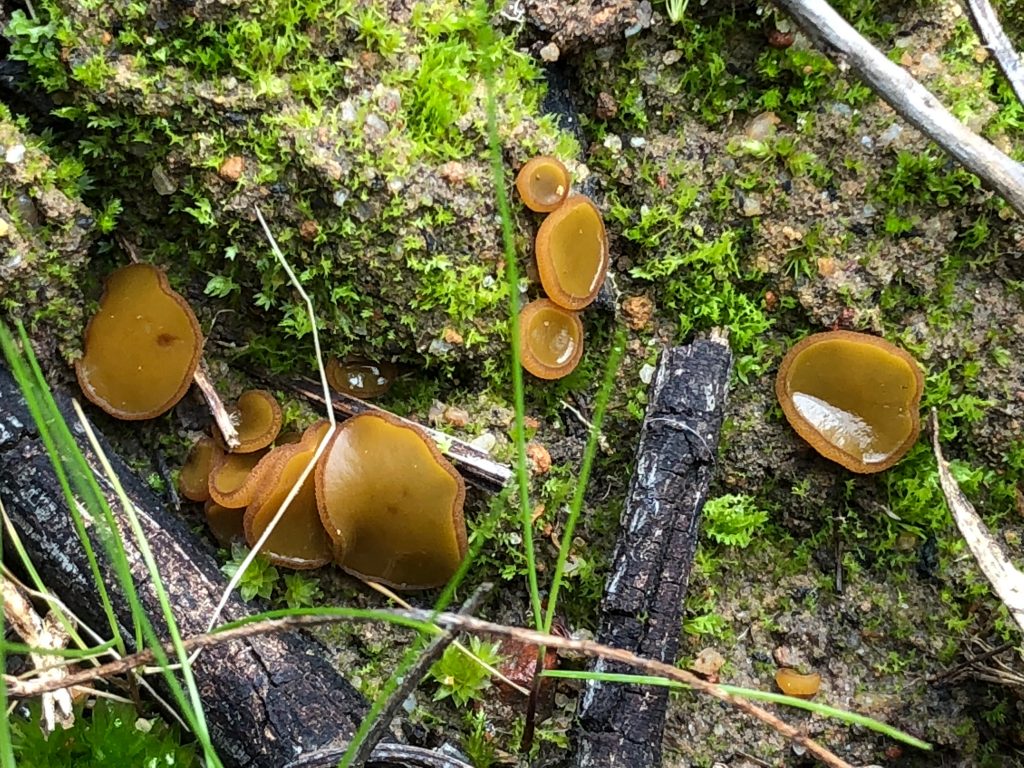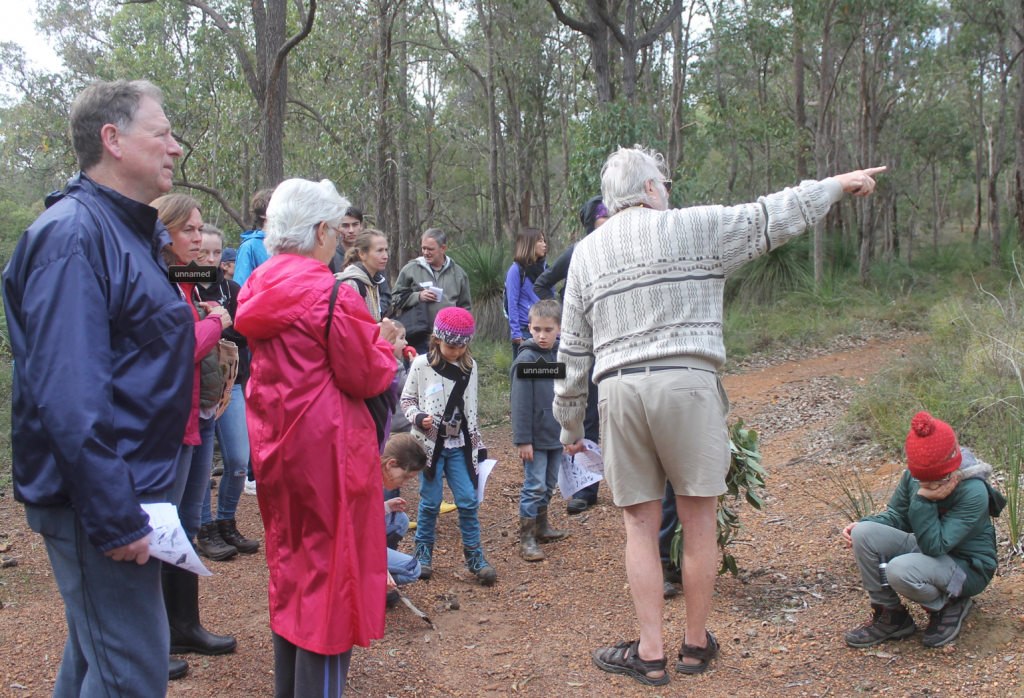DARLING RANGE BRANCH JULY EXCURSION REPORT.
It was a record turnout for the DRB in the Glen Forrest Superblock on 29 July when seventy-nine (yes 79!) attended, including people of all ages and backgrounds. We visited the north-facing slope of the Nyaania Creek which was in full flow on its way into the Helena River. It is mixed Wandoo woodland, in contrast to the mixed Jarrah forest in other sections. It has been actively weeded since the early 2000s by the Friends’ group and the few weeds seen were a testament to their hard work.
The crowd was split into four groups. Our fungi group, led by Kevn Griffiths and Josette Loomes, found over 14 different species. They included both yellow and green cup fungi, (Aleurina sp. ) which belong to the broad group called Ascomycetes with the spore surface on the inside.

Three different species of Russula including Russula persanguina were also found, along with Trechispora farinacea, which was a mat of white cottony threads among leafy litter. Kevn had not previously seen it: A good find! The new fungi booklets were a big hit and were used throughout by members.
The bird watching group led by Mike Green recorded a list of 24 birds including a Dusky Wood Swallow (Artamus cyanopterus), Golden Whistler (Pachycephala pectoralis), and the Scarlet Robin (Petroica Boodang). Unfortunately, the pest Rainbow Lorikeet (Trichoglossus haematodus) was also present.
The flora group collated a list of eighty-two different species thanks to Tony Start, Penny Hussey and Lesley Brooker. We were rewarded by many flowers including an early Fringed Leek Orchid (Prasophyllum fimbria).

Fringed Leek Orchid
Prasophyllum fimbria Photo: R. Green
Gumnut fungi, Photo: JoHn
Common Hovea (Hovea trisperma) resplendent in its bright purple flowers, a Winter Donkey Orchid (Diuris brumalis), the Winged Wattle (Acacia alata), several types of Hakea, including the Hedgehog Hakea (Hakea erinacea), the Prickly Hakea, (Hakea amplexicaulis) and much more.

Common Hovea
Hovea trisperma Photo: A. Wallace
Winter Donkey Orchid
Diuris brumalis Photo: A. Wallace
Eric McCrum (below), led a group of enthusiastic children and adults and found so much on the way that they only walked about 200 metres in total. He was delighted to have his children find seven species of fungi. The overwhelming comments from the visitors were that they hadn’t ever realised there was so much to see and they would normally have walked past it without looking.


At the beginning of the walk, Jaya Vaughan from EMRC encouraged us to join her farm dams project, Joe Grehan told us how to avoid spreading dieback and everyone was encouraged to download Lesley Brooker’s Darling Range Naturebase onto their phones and tablets.
It’s free!
We were very grateful to Briony Moran at the Shire of Mundaring for providing maps and support, and most importantly to Kathy Woods, coordinator of the Friends group, for her time and informative and encouraging input. We were also grateful for the RSVP booking page on the Club’s website as using this made all the difference in being able to handle such large numbers. Thanks John Abbott for setting this up.
Rachel Green

